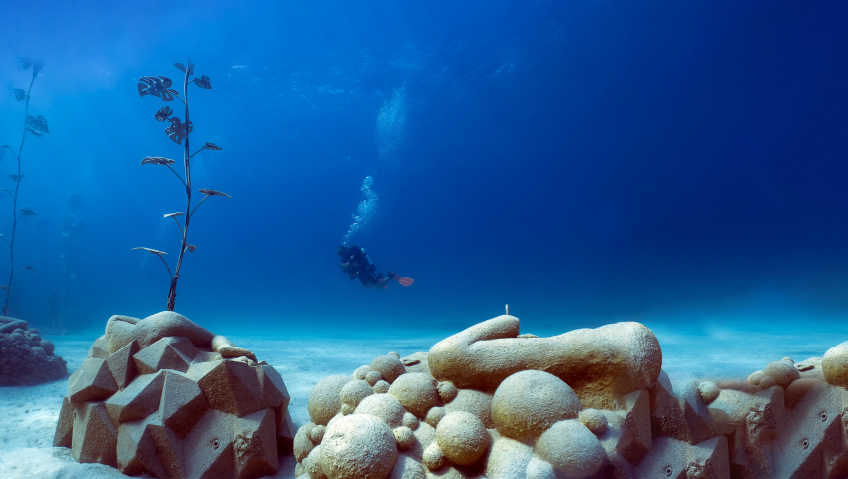In the wake of reports about trillions of pieces of plastic waste in our oceans, and stories about whales washing ashore, bellies full of undigested plastic bags and fishing nets, disturbing studies show how microplastics are adversely affecting not only marine mammals but humans at every stage of our lives.
Found in literally everything we consume, from bottled water to meat and vegetables, researchers at the University of New Mexico Health Sciences (UNM) recently reported microplastics discovered in human placentas. “If the dose keeps going up, we start to worry,” stated Matthew Campen, PhD, Regents Professor in the UNM Department of Pharmaceutical Sciences. “If we’re seeing effects on placentas, then all mammalian life on this planet could be impacted. That’s not good.”
According to scientists, the most common plastic present in placental tissue is polyethylene (PE), commonly used to manufacture everyday household items like plastic bottles and bags, clear food wrap, detergent containers, and baby bottles, which shed microplastics when heated or shaken. Particles measuring less than five millimeters (0.2 inches) in diameter are labeled “micro,” but the lower end of that scale is measured in nanometers, representing microplastics found not just in the water we drink and the food we eat, but inside our lungs, blood, and even hearts.
Just a few months after the UNM publication about plastic in human placentas, a study in the Toxicological Sciences journal, Microplastic presence in dog and human testis and its potential association with sperm count and weights of testis and epididymis, expressed concerns about microplastics and nanoplastics and their potential impact on human reproductive systems, including “potential consequences on sperm quality.” Most recently, studies from researchers in China and Italy reported microplastics in human brains and blood clots.
These microplastics are everywhere and becoming impossible to avoid. While more of us are making efforts to reduce our use of plastics—substituting paper or bamboo instead of plastic straws and single-use utensils—questions remain about how to rid ourselves of the microplastics already inside our bodies. This may be more of a challenge than we hope. According to the World Wildlife Fund, humans are ingesting five grams of plastic every week… about the same as eating a credit card.
Science is playing catch-up, trying to determine the long-term impact of these tiny bits of plastic waste on our digestive and immune systems and overall health. Some reports link these foreign bits of synthetic material to everything from birth defects and developmental disorders to serious immune reactions, cancerous tumors, and even altered DNA.
Hard to quit
While we may not think of it as an addiction like smoking, drugs, alcohol, and gambling, society depends on plastics. They are as much a part of our lives as the air we breathe.
The word itself, plastic, stems from plasticus—Latin for ‘capable of molding’—and plastikos, Greek for ‘to mold’ or ‘fit for molding.’ Composed of large, organic carbon-containing molecules that can be formed into countless products, plastics are embraced by manufacturers over other materials, such as wood, metal, and stone. Lightweight yet extremely strong, plastics can be transparent as glass, flexible as rubber, shatterproof, waterproof, chemical resistant, and made into practically any color. It is no wonder companies choose these materials for everything from packaging and acrylic sweaters to computer cases, carpets, and car parts.
While humankind has used natural plastics (resins) for thousands of years to make buttons and combs, and even mummify the dead in Ancient Egypt, plastics truly took off when American inventor Charles Goodyear accidentally vulcanized rubber in 1839. Dropping sulfur-treated rubber onto a hot stove altered its properties, hardening the natural rubber. The years to come saw others create celluloid, Bakelite, nylon, polyethylene, polyurethane, and many other types of plastic.
Despite its many benefits, plastics have created another issue: waste. According to Statista, “Global plastics production has doubled since the beginning of the century, to almost 400 million metric tons per year in 2021.” We produce over 350 million metric tons of plastic waste annually. And despite well-intentioned programs, it is estimated that less than ten percent of plastic waste is recycled, with the majority ending up in landfill, waterways, or incinerated, creating additional pollution.
Sustainability issues
With governments worldwide cracking down on plastic waste such as disposable bags and single-use takeout cups and containers, many are left thinking, “what next?” Considering the enormous amount of plastics we consume on a daily basis, a lack of standardization across recycling programs, and reports of plastic waste in landfills, the challenge of how to deal with plastic is enormous. To simply say, “stop using plastics” is akin to saying, “stop drinking water.” It is impossible.
Along with switching to organic alternatives made from wood or bamboo, there are options, including making plastics easier to recycle and remake repeatedly into other items—such as plastic chairs—and plant-based plastics. Derived from vegetable material like corn, bamboo, and even seaweed, plant- and bio-based plastics (made using organic waste) are becoming viable options. Not all plant-based plastics biodegrade, though, and have limitations compared to materials made entirely from plastic.
Another approach to plastics is re-evaluating their role in a circular economy, which considers the entire lifecycle of plastics. Moving away from a linear lifecycle, a circular economy starts with ending single-use plastics and thinking of plastics not as waste, but as a renewable resource. Instead of finding their way to garbage dumps or into ecosystems, improved programs would see better plastics recycling, new markets for recycled products, and greater reuse. One challenge remains in persuading companies to use higher amounts of post-consumer resin (PCR).
For the foreseeable future, plastics will surely continue playing an important role in everything from manufacturing to packaging. Demand remains strong, and while newer types of biodegradable and other plastics may be introduced, it does not seem like we have the means yet to deal with this problem at its root. For now, until we find a solution that completely changes the paradigm, it seems we stay on this path to a plastic world.






